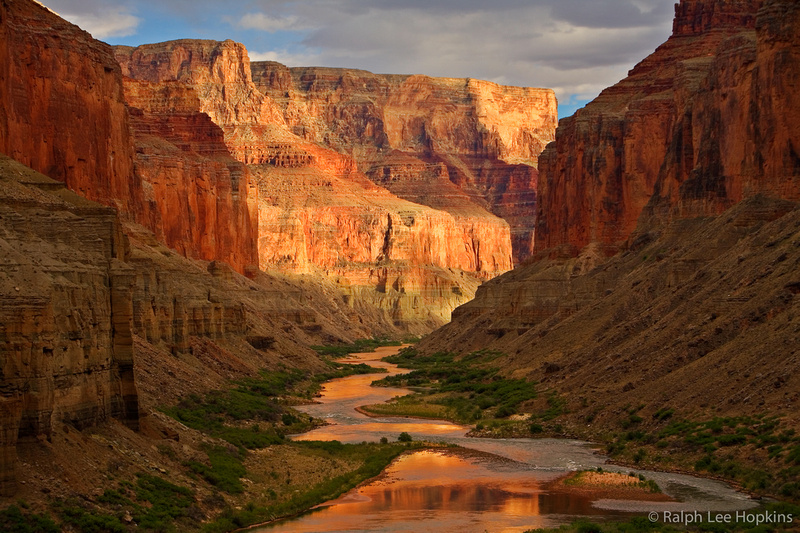Down the River – Testing your limits in the Grand Canyon
A trip down the Colorado River through the Grand Canyon is one of life’s great adventures. The thrill of running world-class rapids, the awe-inspiring scenery around every bend, and the surprises of hidden inner canyons all contribute to a life-changing experience, The extreme conditions in the Grand Canyon will test your limits, so it's critical to prepare.
A river trip is hard on your equipment – presenting many unique challenges from charging batteries to protecting gear from the elements of sun, sand, and white water. The Grand Canyon will also challenge you as a photographer – with extremes in contrast between sun and shadow, the darkness of deep side canyons, and dealing with all your gear while on the river and on shore.
CHARGING BATTERIES: First, the battery problem. No worries mate. With today’s modern digital cameras, batteries last for days between charges, and with the warm temperatures in the canyon, holding a charge was never an issue. I found that having three batteries for each camera body was more than sufficient. I saved battery power by turning off the LCD and reviewing photos only sparingly. Most river outfitters offering photo-oriented trips have solar or deep-cycle battery systems for charging emergencies, so be sure to check on this when planning your trip.
DATA MANAGEMENT: Brining a laptop on a river trip in the Grand Canyon is not an option (or at least not a good one). For this trip, I carried enough memory cards for the entire shoot. I treated the cards like film, carrying about 120GB protected in Gepe watertight card safes (http://www.bhphotovideo.com/c/product/332251-REG/Gepe_3862E.html). Even so, I still had to beg a few extra cards from my mates by the last day. Always bring more cards then you think you will ever use.
And just to be safe, I still backed-up along the way to an Epson P-7000 multimedia photo viewer (http://www.bhphotovideo.com/c/product/573864-REG/Epson_B31B192002.html).
The best way to protect your gear from the wild white-water on the river, and also the invasive sand on shore, is to use water-tight, hard-sided camera boxes. A popular brand is the Pelican case, affectionately called the “birdie” case by river guides. These hinged boxes are sealed by an O-ring and allow easy access to your gear between rapids. For this I use the Pelican 1510 case (http://www.bhphotovideo.com/c/product/330237-REG/Pelican_1510_004_110_1514_Carry_On_1510.html) with padded dividers (not foam dividers which soak up water).
For hiking side canyons, I transferred my essential camera gear to a camera backpack or beltpack. What system you use depends on how much gear you are willing to carry. ThinkTank, Lowepro , and Tamrack all have a great selection of packs to choose from. Less is more in the Grand Canyon, so carry only what you are going to use.
A tripod, preferably a lightweight carbon-fiber model, is essential for making long exposures in the deep shadows of the canyon, for creative blur shots of moving water at slow shutter speeds, and for time exposures of the night sky. I use a Gitzo tripod outfitted with a Really Right Stuff ballhead. Quick-release plates are essential for quick set-up and ease of use. And it’s essential that your tripod can strap on your backpack when navigating narrow slot canyon or skirting waterfalls. Remember, it’s important to love your tripod, otherwise you will never use it.
On the creative side, one of the biggest challenges is handling the different lighting conditions along the river. Balancing he extreme contrast between deep shadows and sunlit walls are next to impossible without graduated neutral-density (ND) filters or shooting a series of exposures for HDR. I prefer to make the best possible photos in the field, so I rely on Singh-ray 2-stop and 3-stop hard-edge graduated ND filters for balancing exposures (http://www.bhphotovideo.com/c/product/615171-REG/Singh_Ray_R_46_4x6_Graduated_Neutral_Density.html) . The image above is a 2 second exposure shot on a tripod using a 3-stop grad ND filter.
In low light and twilight situations, I discovered that Litepanels Mirco LED on-camera light (http://www.bhphotovideo.com/c/product/542007-REG/Litepanels_LP_MICRO.html) works wonders as a fill light for painting foreground rocks and flowers. The show below is a 1 second exposure with fill light highlighting the foreground cactus flowers.
And finally, by mistake one night I discovered that it’s fun to paint rocks with my red headlamp. I was trying to shoot a strait time exposure of the sky when I left my red headlamp on by mistake. Turns out after reviewing the shot on the LCD I liked the effect on the red sandstone boulders, so I tried it again on purpose, and presto – a masterpiece! The image below is a 30 second exposure of the moon and clouds in Marble Canyon.
Go ahead, dare to get out there on the river and test your own limits.
© Ralph Lee Hopkins
